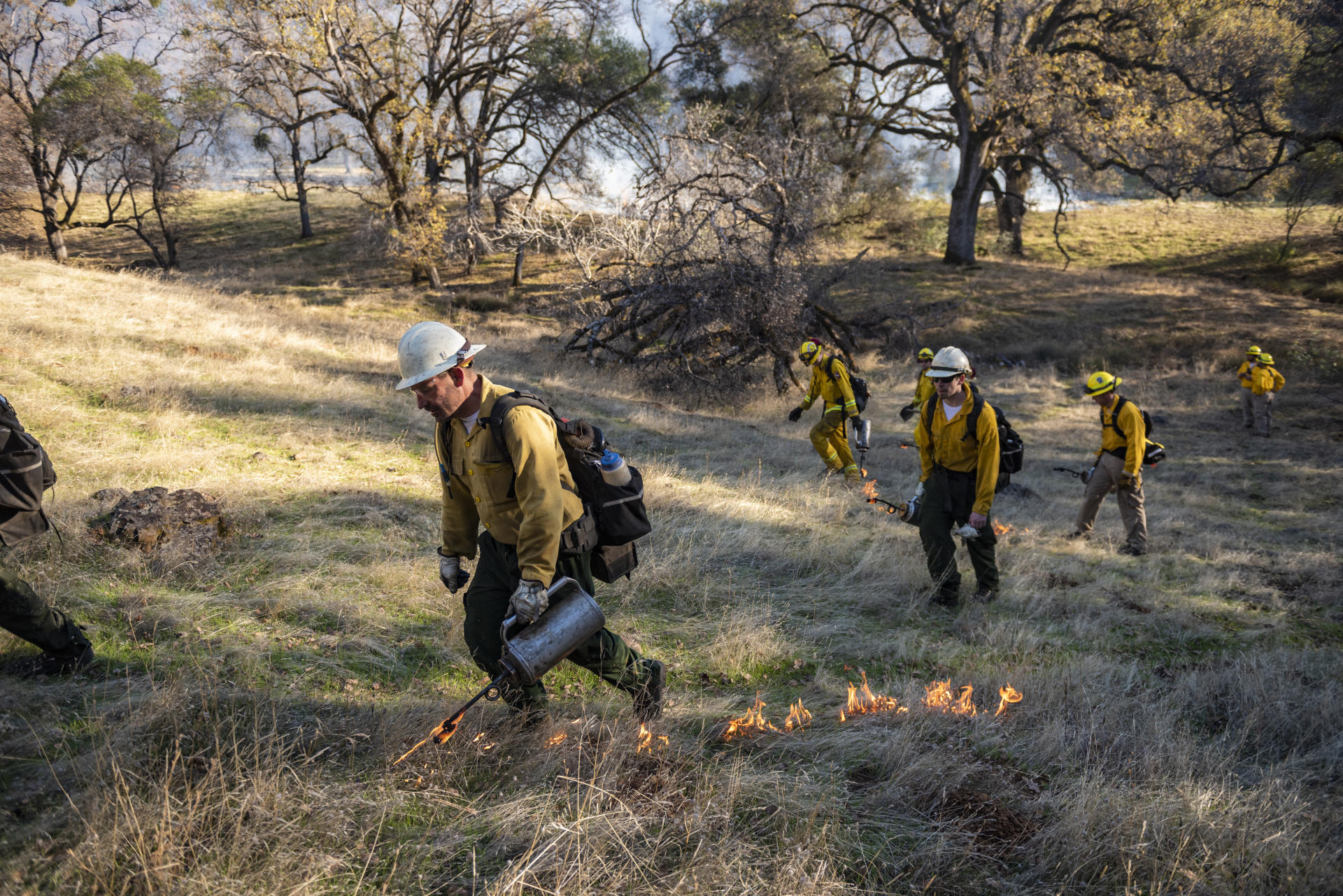Prescribed Fire Scheduled on University’s Big Chico Creek Ecological Reserve

Ron Sartain (center) with Firestorm, uses a driptorch to intentionally ignite fires as Big Chico Creek Ecological Reserve staff are partnering with Terra Fuego, Firestorm and Cal Fire to conduct a prescribed burn at the University Big Chico Creek Ecological Reserve on Thursday, December 13, 2018 in Chico, Calif. This project will reduce fuels, which will mitigate fire risk on the property while providing a training opportunity for CSU, Chico students and current and future fire professionals. This project will allow participants to gain experience in using prescribed fire as a tool for wildfire mitigation and ecological restoration. The BCCER has been using prescribed burns as away of reducing fire danger and teaching students about resilient ecosystems for more than a decade. (Jason Halley/University Photographer/CSU Chico)
Editor’s Note: This news release has been updated to reflect a change in weather forecast. The burn scheduled for October 8–9 has been postponed until Cal Fire determines winds will not be challenging for burning conditions. Please check back for updates.
California State University, Chico’s Big Chico Creek Ecological Reserve (BCCER) is partnering with Terra Fuego to conduct a prescribed burn in the month of October. Reducing fuels on approximately 105 acres, this project will also provide multiple ecological benefits, mitigate fire risk on the property while act as a training opportunity for CSU, Chico students and current and future fire professionals. This project will allow participants to gain experience in using prescribed fire as a tool for wildfire mitigation and ecological restoration.
The prescribed fire will be visible to residents of Forest Ranch and Chico.
This project is funded through the California Climate Investments program, which supports projects including affordable housing, renewable energy, public transportation, zero-emission vehicles, environmental restoration, more sustainable agriculture, recycling and others. At least 35 percent of these investments are made in disadvantaged and low-income communities and households.
“We are at a tipping point with wildfire in California, so it is essential that our agencies and organizations collaborate to implement treatments across boundaries to meet this challenge at a scale that matters.” said Terra Fuego executive director Stephen Graydon (Communication Studies, ’14; MA, Communication Studies, ’16).
“Prescribed fire projects are excellent learning opportunities for our students and fire professionals, while promoting forest health and mitigating future catastrophic fires.” said BCCER Director Eli Goodsell (Criminal Justice, ’07; MA, Environmental Policy and Planning, ’11). “It is important that we conduct these projects now to protect our local communities, enhance our ecosystems and continue the conversation around the important role prescribed fire plays on our landscapes.”
For more than a decade, the BCCER has been using prescribed burns as a way of reducing fire danger and teaching students about resilient ecosystems. The reserve is home to 15 different vegetation communities, ranging from oak woodlands and mixed conifer forests to grasslands and chaparral, making it a prime spot for training on different wildfire environments.
Media interested in being onsite during burn operations must comply with standard operating procedures to ensure safety. Contact Goodsell at 530-228-1525 or Graydon at 530-899-8399 to reserve a spot.
Owned and operated by the CSU, Chico Research Foundation, the Big Chico Creek Ecological Reserve contains 3,950 acres of land, 4 1/2 miles of Big Chico Creek, and exceptionally diverse ecosystems. Since its creation in 1999, BCCER has provided students and visitors with opportunities for hands-on experiences with nature and continues to be a hub for innovative research and land management best practices.


